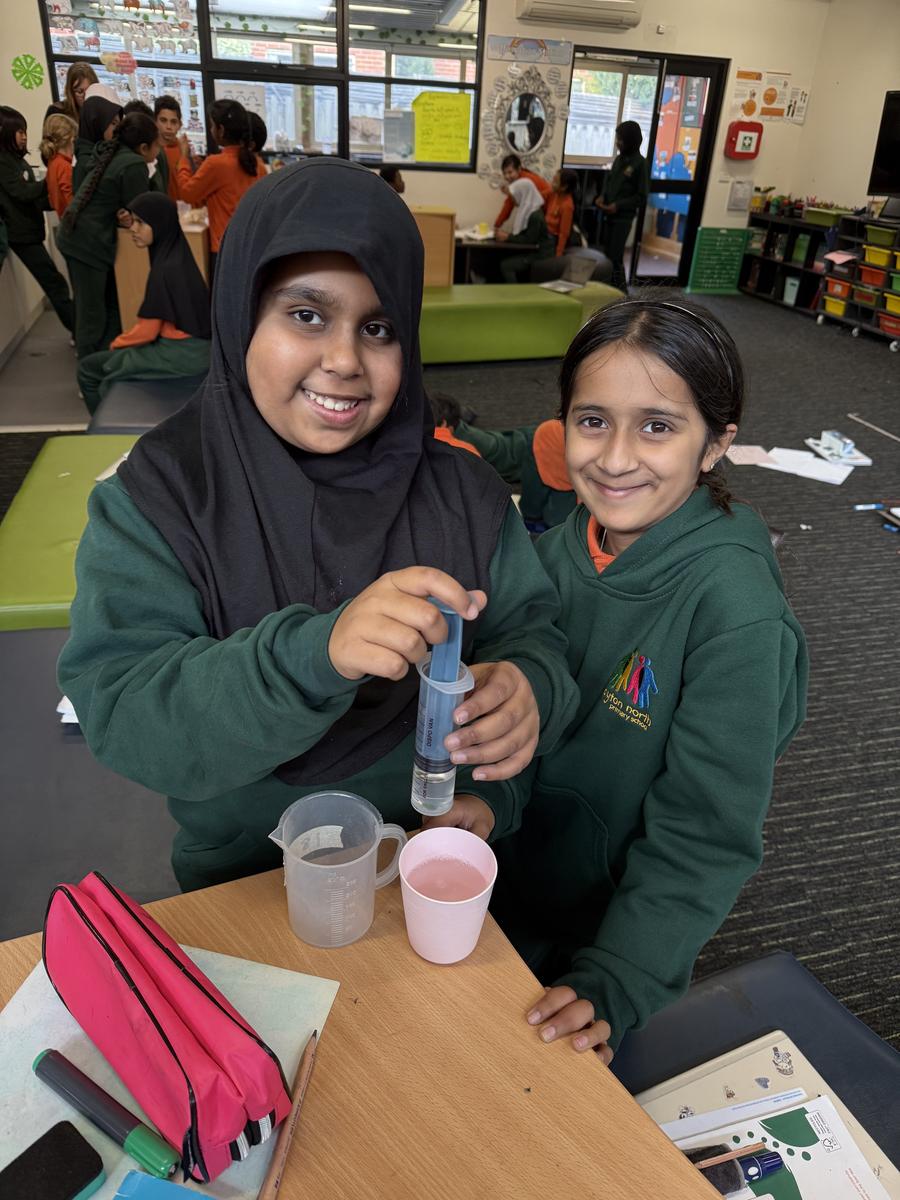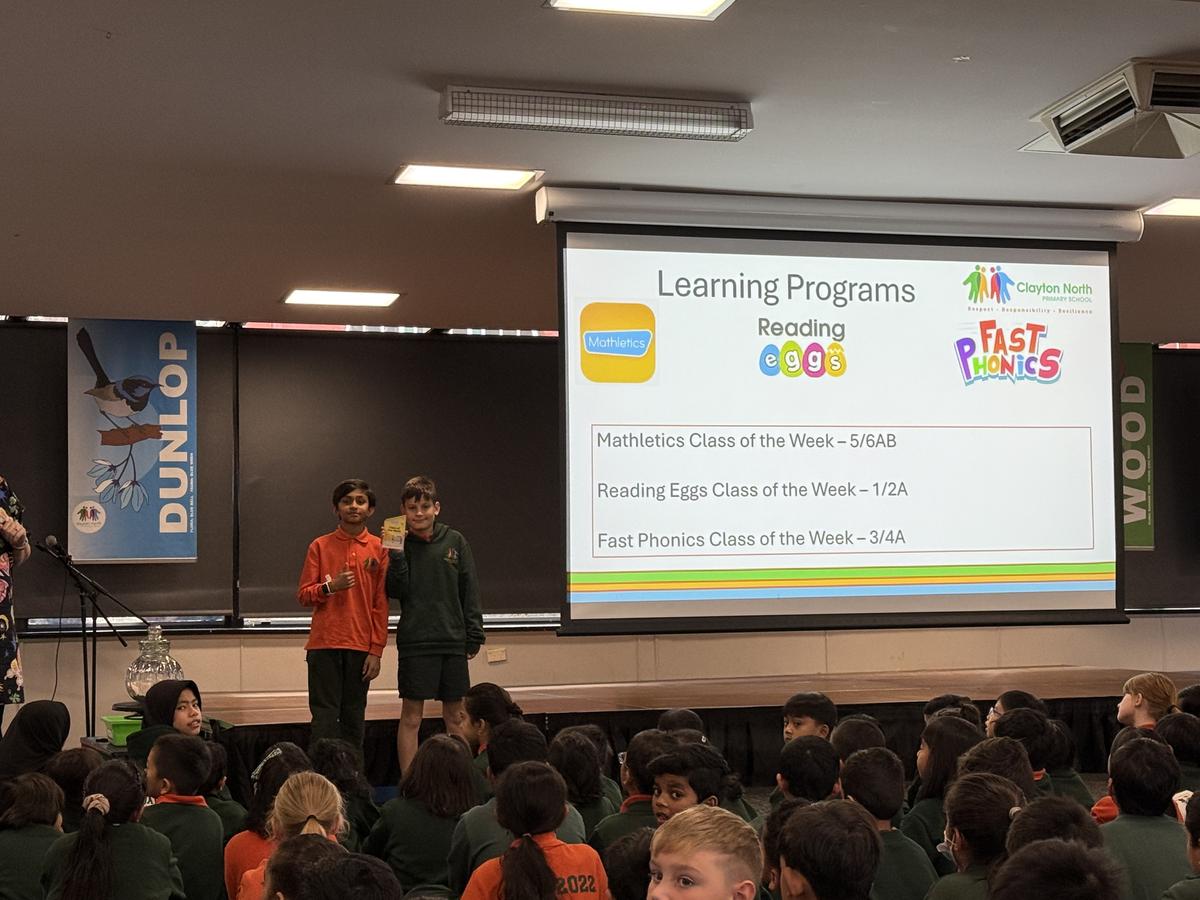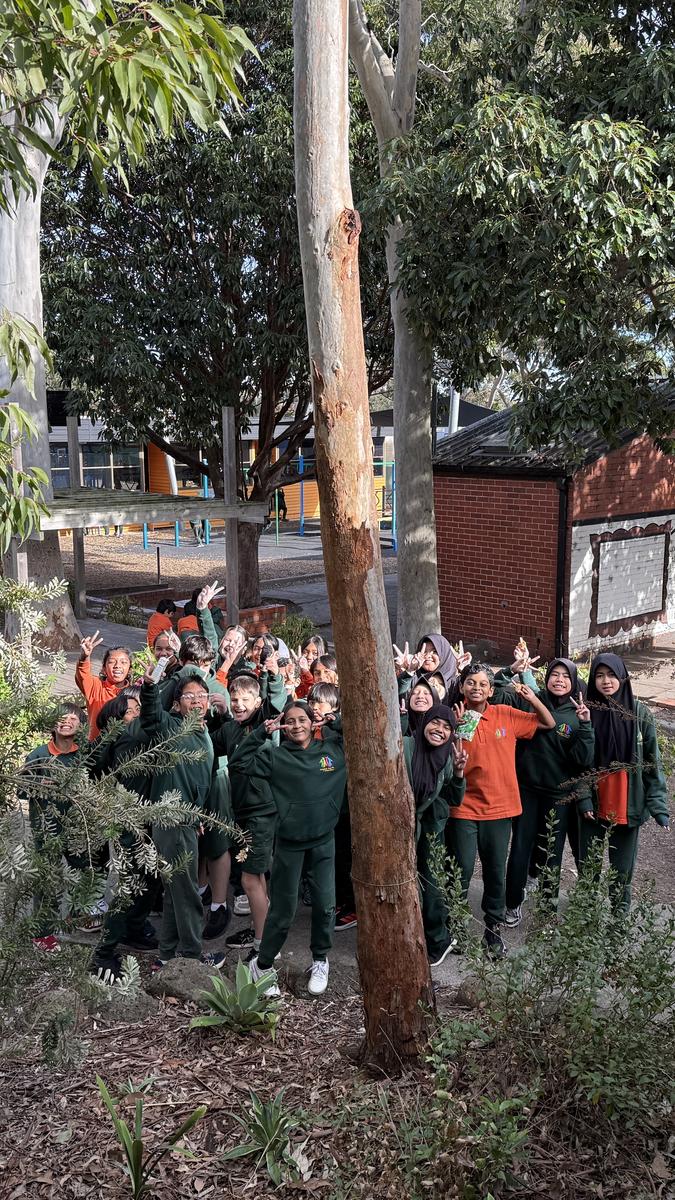Year 5/6 News
Radhika and Precious

Year 5/6 News
Radhika and Precious
A Journey Through Culture and Science
In Writing, we have been learning about Indigenous Tools & Technology. We all researched about spear throwers, eel traps, spears and other Indigenous tools. We then created dioramas about our chosen tool and procedure texts about how to use the tool or how to make the tool. For the Diorama, we used natural tools and man-made tools. We wrote our final procedure text on our computers. We have also been learning about Photosynthesis. We conducted an experiment to simulate the situation. We used materials such as syringes and leaf discs. From there, we calculated how much time it takes for Photosynthesis to happen to the leaf discs by using a timer. We have also learned how it works; it was really fun to simulate Photosynthesis and to learn about it.
- Arav Ramani, Year 5
South Oakleigh Secondary College Excursion: Investigating Materials - Absorption, Insulation & Strength
Our recent visit to South Oakleigh Secondary College was an incredible learning opportunity for our students. The school generously welcomed us into their science laboratories, where their experienced physics teachers guided our students through a series of hands-on experiments. The purpose of these activities was to explore the properties of different materials commonly used in clothing. Through absorption, insulation, and strength tests, students observed how various fabrics respond to water, heat, and weight. This helped them understand which materials are most suitable for different seasons or events. It was a valuable experience that combined scientific investigation with real-world application, and we are very grateful to SOSC for sharing their expertise and resources with us.
In SOSC, we were learning about three things. The first one was about what type of material could take 10ml of water. The second one was about what type of material could make sure the ice wouldn’t melt so we placed an ice cube in a container and covered it with a cloth (our material) and placed in a microwave looking machine and left it there for 15 minutes. The third one was the stretch test where we took a clamp and stand and placed our material on the hook of our clamp and stand and hooked some 50 to 150 grams of weight to our material.
- Sahasra Khammam and Emmaline Toups Dugas, Year 5s




3D Objects Adventure: Pyramids and Prisms
In Math, we learned about pyramids and prisms, and the differences between these shapes. In this piece, I will explain what these shapes are, their differences, and their similarities. A prism is a shape that has rectangular faces. They can be called a cuboid, rectangular prism, or named based on their bases. This shape is one example of a prism. A prism has two bases, and its faces meet at 90° angles. A pyramid is a shape that has one base, and there are many types of pyramids. A pyramid is also named based on its base. For example, if the base is a square, it is called a square pyramid. This is one example of a pyramid. A pyramid looks like a cone, and its faces meet at approximately 45° angles. The similarity between pyramids and prisms is that both have vertices and bases/faces.
- Ibrahim Alfaruq, Year 5
Environmental Issue Talks through Hanna Gold’s The Last Bear
This term, our Year 5/6 students have been diving into The Last Bear by Hannah Gold, a powerful and award-winning novel that has captured both hearts and imaginations. As part of our reading program, we’ve been using this text to enhance key comprehension skills such as identifying cause and effect, comparing and contrasting characters, and locating specific facts and quotes. Through rich discussions and engaging activities, students are developing a deeper understanding of the story’s themes, particularly friendship, courage, and especially environmental conservation. It’s been wonderful to see their enthusiasm grow as they connect with the characters and reflect on real-world issues woven through the narrative.
Celebrating Our Mathletics Champions!
Congratulations to our hardworking Year 5/6 students who received the Mathletics Award last week! This award recognises consistent effort, persistence, and achievement in our online Maths program. Students have been working through targeted tasks and challenges that support their classroom learning, building confidence and fluency across a range of mathematical concepts. It’s been fantastic to see so many students taking initiative with their learning and striving for personal bests.



